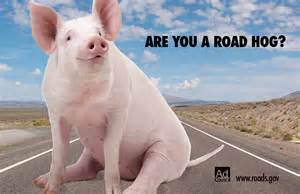Constructing Genre: A Threefold Typology
Constructing Genre: A Threefold Typology, by Donna J. Kain, TECHNICAL COMMUNICATION QUARTERLY, Technical Communication Quarterly, 14 (4), 375–409. 2005, Lawrence Erlbaum Associates, Inc. East Carolina University, built environment, shaped spaces.
The article team was concerned with built environments, spaces shaped articulated, designed, and constructed in ways that have
often excluded people.
The term genre has been used to describe “stabilized-for-now” (Schryer, “Records”) amalgamations of rhetorical strategies, content, and form to mediate ongoing activities, social relationships, and systems of activities.
Theorists argue persuasively that, as typifications of discursive actions, genres allow people to recognize and act on the social purposes of texts within particular contexts (e.g., Miller). Consequently, much genre research and theory over the past twenty years has concentrated on texts that are routine, recurring forms of discourse enacted within communities, or among communities that interact in larger “networks” (Bazerman, “Systems”).
Theorists discuss genre in two ways simultaneously: (1) plurally, as actual types of
Discourse in use, and (2) singularly, as a concept for categorizing, and strategically-applied knowledge about interpreting, managing, constructing, and negotiating discourse specific genres such as medical diagnoses and evaluations of learning-disabled students. Thus, the identities of people with disabilities and their access to social in stitutions and spaces have in the past largely been articulated by and to others employers, courts, and medical professionals, architects—not by those who have disabilities (Barton; Parr and Butler; M. Russell).
Lateral thinking and lateral membership envelope the expertise pool and impart a genre of the group as rhetoric or rhetorical text.
New members of a genre must learn the vocabulary of the community and use this vocabulary to maintain an identity within the group. Membership alliance is not based on activities or motives of the group, and membership is based on the learned vocabulary. The organizational structure is more than vigilante but less than a gang.
Donald Trump’s presidential campaign is a working example of a genre of the community. There is a dialog that exists and a strong conglomerate of genre development within this group. Just today Trump said violence is inevitable because the people want to be heard. That statement is rhetorical in the voice promoting violence. Violent outbreaks are common at Trump presidential election rallies. The common vocabulary comes via dialog from Trump’s discourse at rallies. The Trump publicity team distributes the rhetorical symbology, buzz words, and propaganda through the media.
This article argues, evidence of the evolution of the group is a position and voice informing about social issues. The article, the team, discussed fused content, conventions, and rhetorical identity as development levels. The Trump campaign rhetorical identity is managed by a team. The rhetorical, conventions, and content are developed by the at-large community learned vocabulary. The at-large response group has been violent and conducted racist activities. The text of the rally is “let’s all come together”… the genre is dominated by the community encouraging violence.
Who will be attending the white supremacist rally in stone mountain this weekend? This group has genre big time, and they make their movement known. Genre development is at work on many levels and encompasses a wide range of human values.

Recent Comments